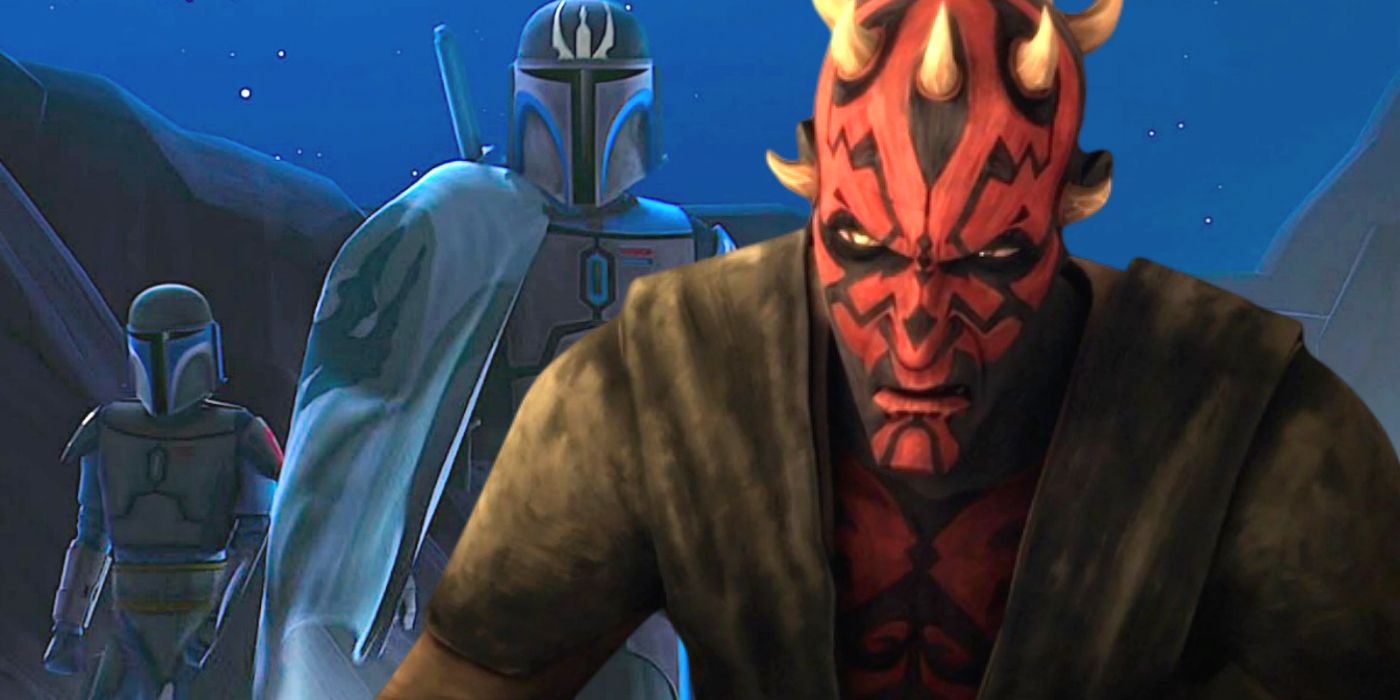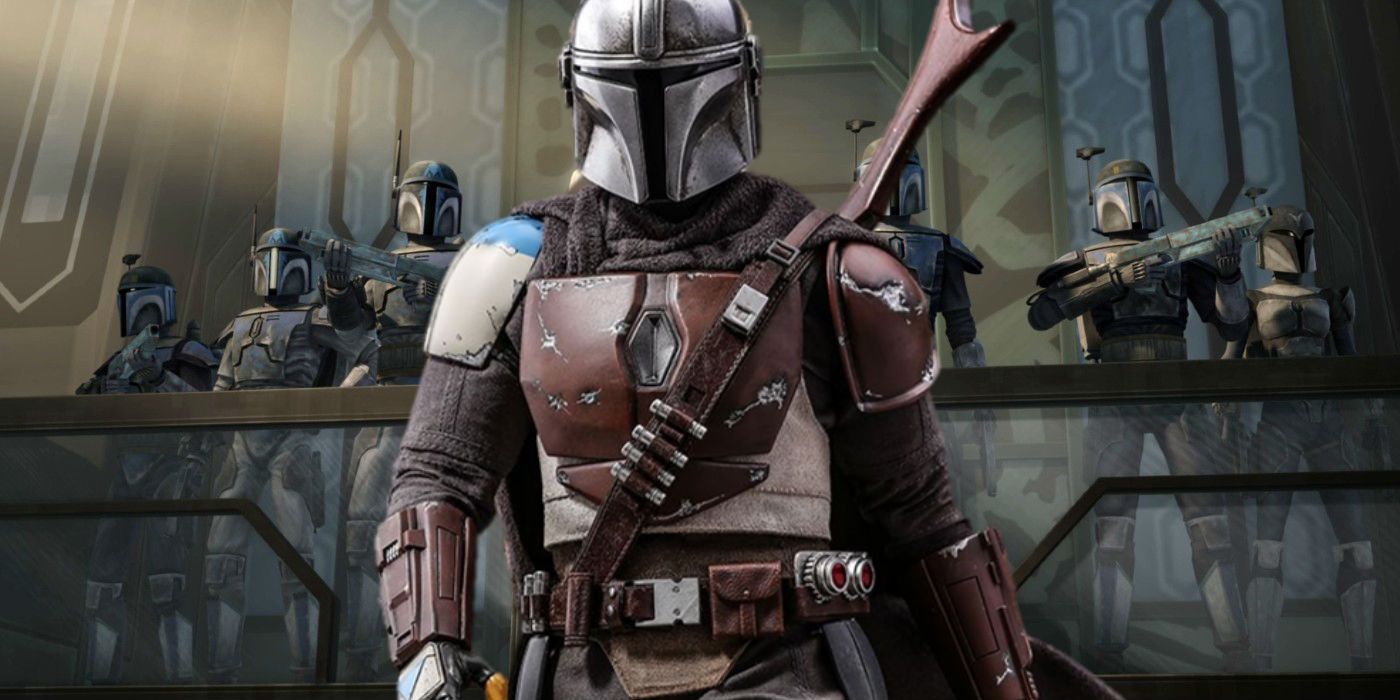Season 7 of Star Wars: The Clone Wars reintroduces viewers to Darth Maul and his Mandalorian enforcers known as the Death Watch - here's what you need to know about them. The seventh and final season of The Clone Wars is now streaming on Disney+, after the Mouse House revived the animated series (having cancelled it previously) for one last 12 episode run to properly finish the story. That means revisiting a number of key characters and storylines from the past of The Clone Wars and Star Wars itself.
One of the most integral characters to the story of season 7 will be Darth Maul. The Clone Wars season 7 trailers have already setup Maul's coming duel with Ahsoka Tano, and their rivalry will likely be a major thread this season as part of the Siege of Mandalore plot line. Of course, with Maul are his Mandalorian troops. Who are they? Where did they come from? And most importantly, how do they factor in to the end of The Clone Wars?
The Death Watch originated as a splinter group that opposed the Dutchess of Mandalore, Satine Kryze, and her pacifistic ways. They yearned for the days of old, where Mandalorians were respected and feared throughout the galaxy, characterized as dangerous and formidable warriors. They were initially led by Pre Vizsla, who brought them to prominence during season 2 of The Clone Wars. They hoped to retake Mandalore for themselves and their old ways, however they were never successful on their own. It was when they met Maul that their fate would drastically change.
After killing both Vizsla and Kryze with the Mandalorian weapon of legend, the Darksaber, Maul assumed control of all of Mandalore. In doing so, he also became the leader of Death Watch, or at least those who remained after the group split, with the others being led by Bo-Katan Kryze as part of what became known as the Mandalore resistance. They became his hand, adopting a red and black color scheme on their armor and carrying out his bidding as requested. They served solely under Maul, and so their opposition argued they were no longer the true Death Watch, but rather the villainous Shadow Collective.
The group would stray Mandalorian culture with time. They remained warriors and militaristic by nature, however what became known as the Mandalorian Supercommandos, led by the cunning Gar Saxon, were by no means who they once proclaimed to be. In many ways, they were corrupted by Maul's influence, seeking power as opposed to doing what was right for the common people of Mandalore, which they initially sought to do. Some even adopted his horns as a design choice of their helmet to show their loyalty to him. They weren't exactly the type to save children anymore.
At the point of season 7 in the Star Wars timeline, Maul is still the leader of the planet despite his various excursions away and leaving Prime Minister Almec to handle the politics. His remaining Mandalorian forces will at long last be opposed by Republic troops during the Siege of Mandalore event, which will envelop much of Star Wars: The Clone Wars' last season. They will fight by his side until the bitter end, which will undoubtedly come as Maul's power falls. This story is by no means a brand new one, however some small differences could arise on screen. Regardless, it is unlikely the Mandalorian Supercommandos will give up on their leader, and their planet, so easily.


